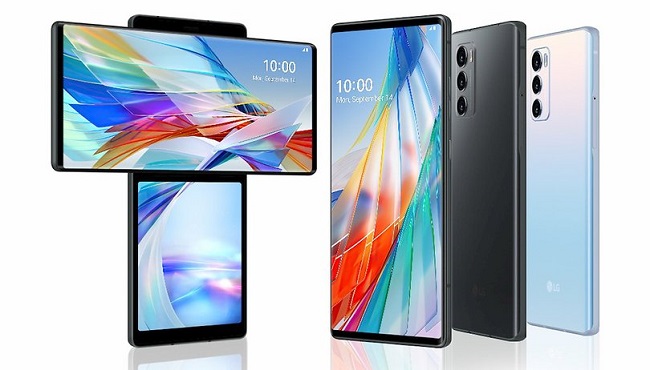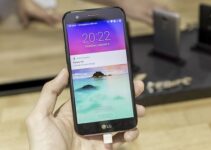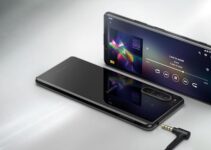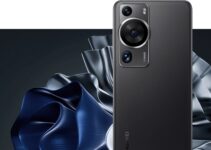The LG Wing stands out despite the fact that we’ve seen several very ambitious phones in the past year.
It’s hard to believe such an absurd idea could ever be real. You can’t tell at first glance that the LG Wing has two screens because of its unique design. The second panel can only be seen if the primary panel is swivelled out of the way, as it is hidden behind it.
All You Need To Know About the LG Wing
While it’s a cool trick to show off at parties, this unconventional method of using two screens isn’t the most refined implementation we’ve seen. The final T-shaped product looks like it was made by glueing together two candy bar phones.

Yet, you shouldn’t judge the LG Wing by its cover. The odd design and gimbal-equipped camera of this phone allow for some innovative and helpful software experiences. The LG Wing has a high price and subpar performance, according to our review.
Price and Availability
The LG Wing can be purchased via Verizon for $999. (opens in new tab). Both AT&T(opens in new tab) and T-Mobile(opens in new tab) are now selling the gadget.
The Wing comes in a single configuration, with 8GB of RAM and 256GB of storage, with the option to add up to an additional 2TB via microSD card.
LG Wing review: Design
The LG Wing is a monstrously large phone, measuring almost 6.7 inches in height, more than 0.4 of an inch in thickness, and weighing in at little under 10 ounces. The ultra-large Samsung Galaxy Note 20 Ultra nevertheless manages to shed 2 ounces and trim off 0.1 inches from its profile. They seem like very small numbers, but in practise, they make a huge impact.
I won’t linger too long on the Wing’s design outside of its dual-screen functionality, but it’s a nice enough device with a sleek matte metal frame and mirrored glass back, accented with a triple-lens rear camera housing that looks almost identical to Samsung’s most recent Notes.
The Wing’s large 6.8-inch OLED display can be flipped to the left, showing a smaller 3.9-inch panel underneath, and instantly you forget about everything else. The top panel glides away with the touch of a button, moving swiftly and smoothly before slowing to a stop and softly closing in sync with a software-generated click. While you’ll need both hands to close the screen, all it takes to open it is a thumb swipe.
LG claims that the Wing can survive 200,000 swivels, which translates to about five years of use. Although I did notice a tiny bit of vertical flexing when gently lifting the top display up and down during the pre-production preview period, LG appears to have stamped that out in the final product, making the whole mechanism feel very strong.
Turning the top screen to the side reveals a dual-screen home screen. LG’s Swivel Home, featured on the 6.8-inch screen, arranges huge app shortcuts in a horizontal format. The standard Android home screen is located on the opposite display. Curiously, the app drawer and gestures for Android’s navigation bar may be accessed from any panel.
It’s important to note that LG is one of the few smartphone manufacturers still supporting the 3.5 mm headphone jack, but you won’t find one in the Wing. This is logical, given that LG had to conceal the front-facing selfie camera behind a motorised pop-out mechanism. With so many moving parts, it’s a little unfortunate that the Wing is not officially certified as water resistant.
Dual-Screen experience and Software
While there have been times when the Wing has been confused about which way to orient apps on both displays based on the gyroscope’s orientation, my overall impressions of the Wing’s usability have been favourable.
LG’s software not only responds fast and smoothly when new programmes are added or take the foreground (looking at you, Microsoft Surface Duo), but the company has also come up with some rather ingenious uses for the extra space when you’re not multitasking.
If you’re watching a YouTube video in portrait mode and you tilt your device sideways, the video will shift to a landscape aspect ratio and the remaining space on your screen will be used for playback options, such as volume and brightness. Having the ability to alter the screen’s brightness before playing a movie is a brilliantly straightforward addition. The Wing brings that straight into focus.
It’s simple to launch a second app, like Google Chrome, and have both running at the same time thanks to a pop-out button on that second screen that allows you to conceal or expose those additional features. The Wing also lets you combine apps you intend to use together, such as if you want to watch YouTube on the main screen while checking Twitter on the secondary one.
You’re free to use whatever app you like on that secondary display, however some may need to be whitelisted in the settings to ensure a uniform experience with the primary screen. Games are the lone exception to this rule; Asphalt 9 uses the secondary screen just to show the track layout or to introduce LG’s Game Tools, which allow the user to quickly adjust the visual quality, snap a snapshot, and more.
Displays
The LG Wing’s dual OLED display is an unusual arrangement, but the panels are of excellent quality. The primary 6.8-inch display on this phone has a resolution slightly above full HD and reached 643 nits in our full-screen brightness test with adaptive brightness enabled.
The phone raises the brightness of both screens at once when you adjust the slider, making it brighter than the iPhone 12 at 569 nits and suitable for use in bright outdoor conditions. When set to Natural, the Wing’s primary display covers 105% of the DCI-P3 colour gamut, resulting in vivid colours that won’t hurt your eyes.
I watched the Stardust trailer in Natural mode and was pleased with how the on-screen information looked, but there are different colour profiles available for people who want hues that really pop off the glass. In one scene, Ziggy and the audience were showered in crimson light from the stage, providing a striking contrast to the scene’s deep dark shadows.
The other screen on the Wing is also an OLED display, but it has a more squared-off aspect ratio and a resolution that’s close to full HD, so there’s not much to say about it. Nevertheless, just like the primary display, it is limited to a 60Hz refresh rate, which is woefully inadequate given the Wing’s price point.
Cameras and Gimbal
The LG Wing’s camera system is the device’s other main selling point. While triple-lens cameras have been around for a while, the Wing stands apart from other high-end gadgets because to its ultrawide lens, which can be panned either automatically or by hand (using a virtual joystick).
There are three cameras on the back of the Wing: a main 64-megapixel shooter, an ultrawide 13-megapixel shooter, and a 12 megapixel shooter optimised for video that takes advantage of LG’s latest Hexa Motion Sensor technology.
It’s interesting that the gimbal’s controls are hidden away in a separate panel, making it look like you can’t use it unless the main display is open. Yet, this is a brilliant concept because it takes advantage of the Wing’s unusual shape to improve its one-handed shooting capabilities and provides a home for the controls that would otherwise clutter the viewfinder.
The many gimbal shooting modes can be confusing at first, but they’re easy to learn once you start using them. Different behaviours regarding orientation and object tracking are seen in the three modes: Pan Follow, First Person View, and Follow.
Compared to the Zhiyun motorised gimbal I’ve tried in the past, the Wing’s built-in gimbal is incredibly simple to operate, especially when using the Pan Follow mode, which keeps the subject in the frame for as long as possible by moving the lens independently of the phone and eliminates vertical juddering motions caused by shaky hands.
While First-Person View enables the horizon to tilt and produces movies most comparable to regular filming, Follow Mode fully compensates for all motions on both axis by swivelling the lens, so the horizon is always level. If you’re having trouble visualising this from the text, and I don’t blame you, there’s a nice image in the bottom left corner of the screen that will remind you of the camera’s orientation at all times.
However, the Wing has some trouble with still images. When the lighting isn’t perfect, the quality of the main camera’s photos suffers, and noise becomes more noticeable in low-light situations.
Battery life and Charging
The LG Wing, with its dual display, is powered by a 4,000 mAh battery, the same as in Verizon’s version of LG’s other new phone, the Velvet. Our experience with the Velvet on AT&T showed that LG can make devices with respectable battery lives. The battery life of that phone was exceptional, lasting for 10 hours and 29 minutes in our own web-surfing battery test.
Nevertheless, the Wing’s additional screen and the millimeter-wave radios required for 5G on Verizon’s network significantly increase its battery consumption. Consequently, in the same battery test, we only witnessed an average of 8 hours and 11 minutes with just one screen lighted, and that plummeted to an average of 7 hours and 3 minutes with both screens on for the Wing.
The Wing is fortunate in that it charges rapidly, reaching 57% from zero using the provided charger in only 30 minutes. Given everything going on under the glass and metal, the inclusion of wireless charging is particularly stunning.


